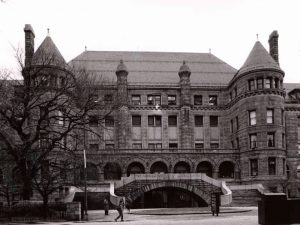Landmark Explorers @ Home
This lesson uses resources from Landmark West’s Landmark Explorers program and Chapter 1 of our award-winning My Preservation Journal. This lesson is focused on 2nd – 5th grade learners, although it can easily be adapted for lower and higher grades. Simply click the menus below to access additional information. Or download the entire Landmark Explorers at Home! lesson plan and materials for free!
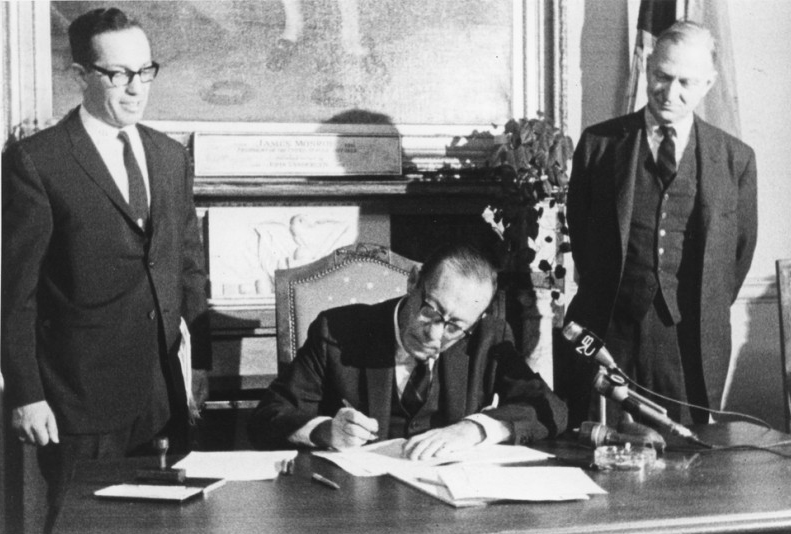
Our Landmarks
A landmark, according to New York City’s Landmarks Law, can be a building, property, or object that is determined to have special historical, cultural or architectural value.
Landmarks are often buildings, but they may also be roads, bridges, monuments, plazas, parks or trees (for those interested, check out 6sqft’s article on the city’s two landmarked trees!). What are some of the landmarks you know?
These are some that we often talk about in New York City. What do you like about these landmarks? What are some other landmarks you might know? Check your guesses! This map shows all the designated landmarks in the City. You can zoom right into your street if you like! If you click on a pink building additional information pops up. How many can you find on the Upper West Side? These are some of our favorites, found right here in our own neighborhood!
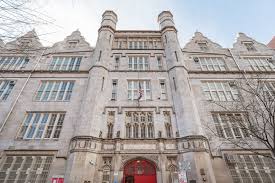
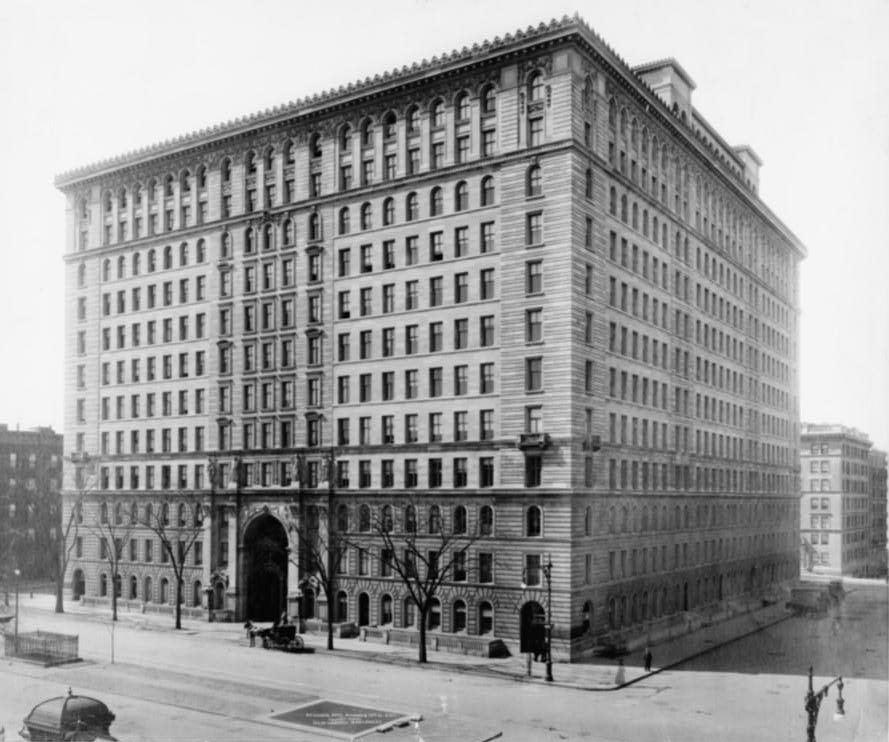
History tells the story
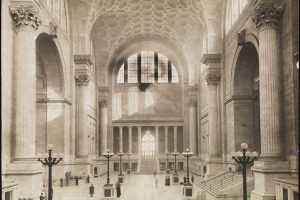
Original Pennsylvania Station
Our Landmarks Law came about following the demolition of Pennsylvania Station in midtown Manhattan. It was so big it took up two full city blocks and construction took nearly 10 years (from 1901 to 1910). It was built of pink granite on the outside with stone, glass and steel on the inside. The design was based on an ancient Roman building. But, by the 1960s, some people though Penn Station was out of date and too expensive to keep. Sadly, it was demolished in 1963 for the construction of our current Madison Square Garden. New Yorkers were so upset by the destruction of Penn Station and other special places that they pushed for the government to create the Landmarks Law. In 1965 the Landmarks Law came into effect to protect landmarks in New York City from being damaged or destroyed. You can find pictures of the original Penn Station here.
Additional resources: Old Penn Station is a wonderfully illustrated picture book that we often read in the classroom. Alas we cannot find an ebook version to share with you! You can explore some of William Low’s illustrations here as well.
Landmark Designation
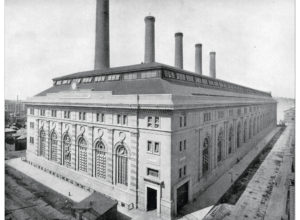
IRT Powerhouse
Not all important buildings in New York City automatically become landmarks. People must advocate (publicly support a cause) to protect the places they believe deserve landmark designation. Landmark West! advocated for over 20 years for the former Interborough Rapid Transit (IRT) Powerhouse building to be designated a landmark, and finally found success in 2017! The IRT Powerhouse takes up a full city block at West 59th Street and West End Avenue. It was built in 1904 to power the subway line to the Upper West Side, where more people were starting to live. Like Penn Station, the Powerhouse was also built to look like an ancient Roman building. You can look at the IRT Powerhouse yourself using Google Maps and Google Street View using these two links – IRT Powerhouse West End Avenue and IRT Powerhouse West 59th Street (Notes: Don’t forget that on street view you can use your mouse to move around!). Use these links to answer the questions on this worksheet. Print it out if you’re able to, otherwise you can sketch the building details and features on a separate sheet. Additional resources: For more information on the IRT Powerhouse, including technical drawings, check out Preserving the former IRT Powerhouse.
The 4 kinds of landmarks
To be a designated landmark, a site must be at least 30 years old. For instance, the original World Trade Center, or “Twin Towers”, never got to be 30 years old, so they were not landmarked. The new One World Trade Center (completed in 2014) is too new to be landmarked. There are four types of landmark designations:
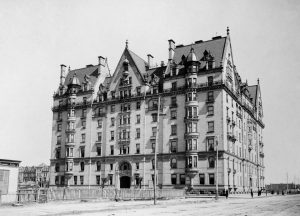
The Dakota Apartments
- An individual (or exterior) landmark, like the The Dakota Apartments, is a single building of particular importance.
- An interior landmark refer to an inside space that is accessible to the public, like the banking hall of the Central Savings Bank (now Apple Bank) on Broadway and West 73rd Street, or the inside of the Beacon Theater on Broadway and West 74th Street.
- An historic district refers to an area with lots of buildings that have a special character as a group, such as the Upper West Side/Central Park West Historic District or the Riverside-West End Historic District.
- A scenic landmark usually has plants, trees or grass, like Central Park or Verdi Square at Broadway between West 72nd Street and West 73rd Street. Scenic landmarks may have no buildings at all.
You can see all the landmarks on the Upper West Side on our interactive map.
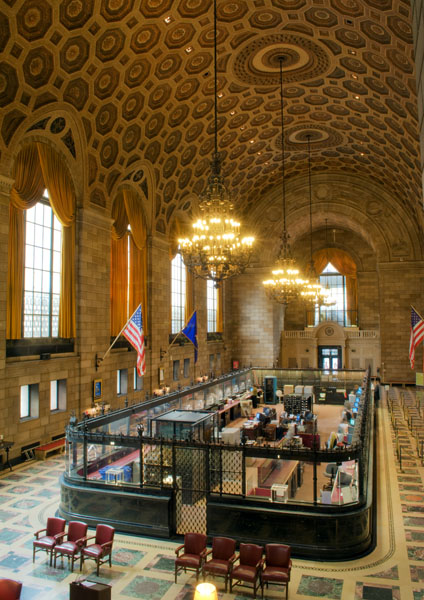
My personal landmark project: now you try!
LandmarkWest! has a ‘Wish List’ of buildings we’d like to receive landmark designation. We actively monitor their status and make their case to the New York City Landmarks Preservation Commission. Our track record is impressive – from 337 designated landmarks in 1985 to over 3,500 today! But there is still much work to do.
These are some of the buildings on our Wish List. Which building, interior, neighborhood or park do you think should be a landmark? Why do you think it might be a landmark? What about this place is important to you or the neighborhood?
Complete your own Landmark Nomination! Don’t forget to include your reasons why you chose this building, neighborhood or park. Here are some Landmark Nomination examples to help you on your way! We’d love to see your nominations, so, if you’d like to, once you’ve done yours you can send them to us here at LandmarkWest! at education@landmarkwest.org or share your creations with us using the hashtag #kpf @landmarkwest on social media.
More Workshops

To inquire about having your school partner with Keeping the Past for the Future, please contact
Sarah McCully LANDMARK WEST! education@LandmarkWest.org 45 West 67th Street New York, NY 10023

